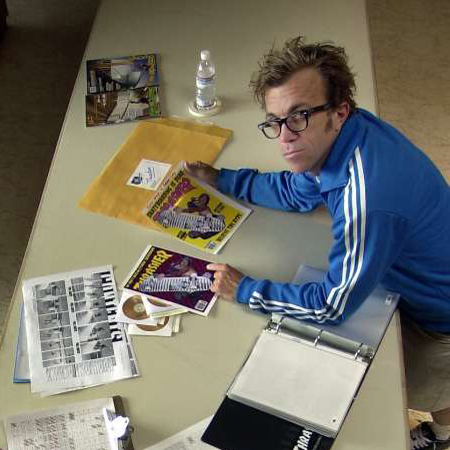Black & Grey Tattoo
Our interview with ink doyenne Marisa Kakoulas on her grayscale tattoo magnum opus

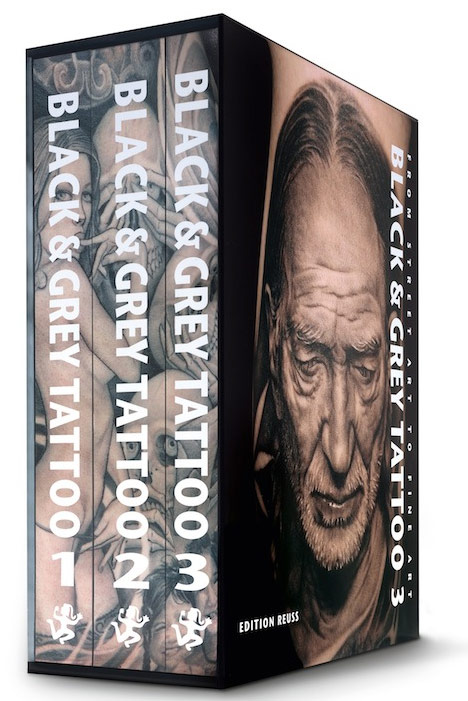
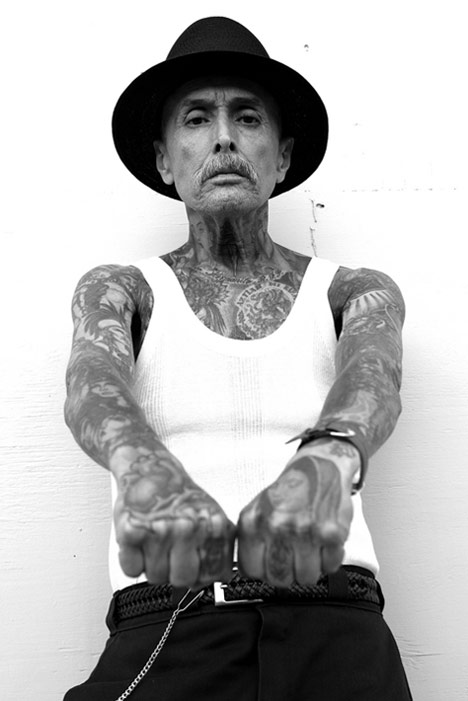
Originating on the streets and in prisons, tattooing’s shades-of-gray genre initially often told the stories of tribal affiliations and conquests or were homages to the deceased. Methods of inking spanned readily available tools and homemade machines could be as random as “a guitar string, cassette motor, Bic pen tube and India Ink,” explains Marisa Kakoulas, co-author of the heavyweight book on the subject “Black & Grey Tattoo“.
The three-volume tome explores how the artform evolved in technique, materials and popularity, as well as how scale and scrutiny increased with time. Released several months ago, the box-set took a year to put together, which Kakoulas says was mostly spent “researching artists and attending international tattoo conventions,” a process that was “exhausting but lots of fun.”
We asked Kakoulas—who also founded the tattoo blog Needles and Sins—to lend a little more insight into the style she describes as “art that has a buttery shading on the skin that can appear almost organic on the body.”
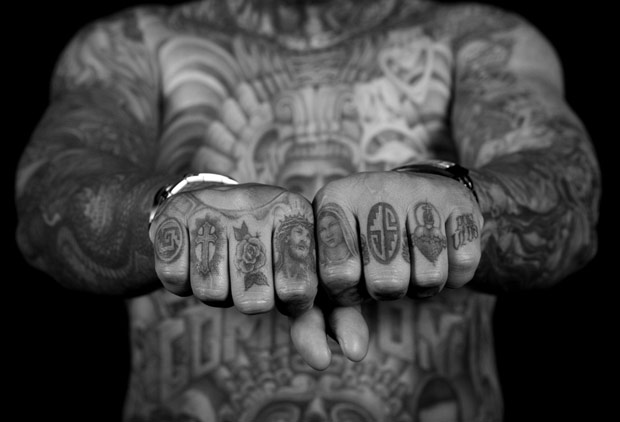
What schools of Black & Grey tattoo exist today?
There are various sub-genres of the Black & Grey style, and we rather unscientifically broke down the material we collected into three volumes: “Traditional Black & Grey,” “Dark/Horror” and “Realism.” It’s not a particularly easy division as there’s cross-pollination among them. The reason we divided it this way is to show how tattoos with similar stylistic elements are interpreted differently by artists around the world.
The first volume, “Traditional Black & Grey,” is somewhat of a misnomer as it’s simply called “Black & Grey” in the tattoo community. But now that greyscale tattooing has moved in different artistic directions, the “traditional” label is used to set it apart from its offshoots. It’s been referred to as “LA style” as many credit the city as the birthplace of the style as an art form. It’s other street name has been “fineline” or “single needle” because a sole ink-dipped tip is used to create anything from three small dots ([signifying] “Mi Vida Loca”) to full back pieces of religious iconography. And there is indeed a lot of Christian imagery among these tattoos. Jack Rudy is one of the godfathers of this style who, with his mentor Good Time Charlie, refined black and grey and brought it to a higher level of artistry.
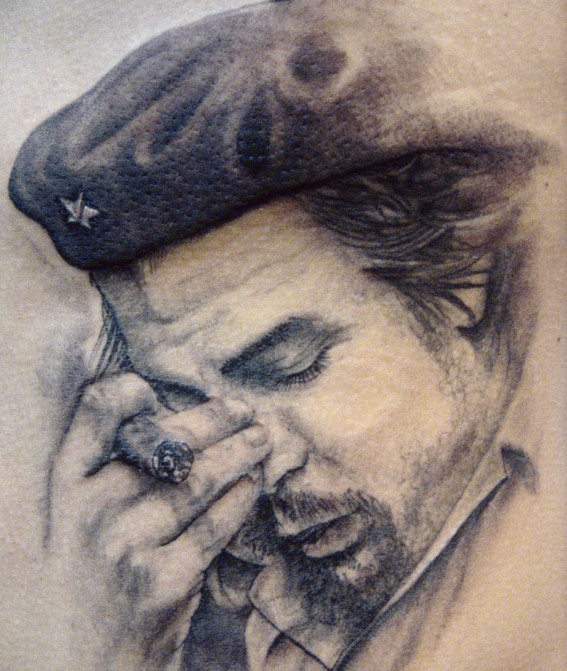
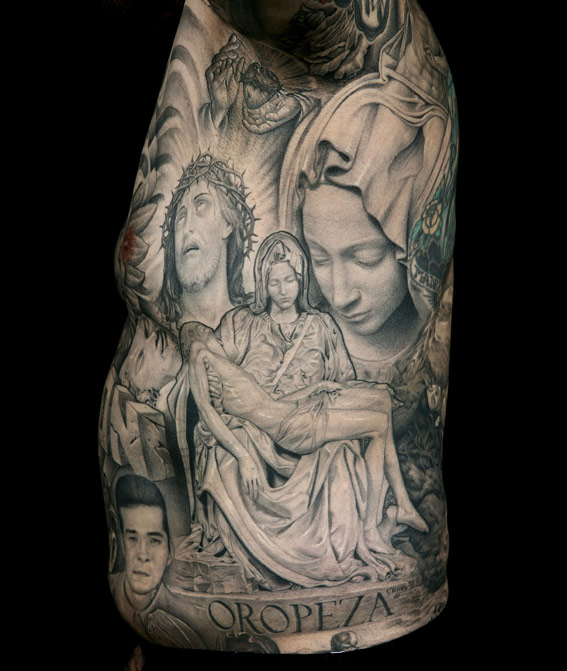
“Dark/Horror” delves into personal demons relayed on skin. “Paul Booth“, the “Dark Lord of Tattooing,” is considered one of the great masters of this style. An interview with Paul is featured in this volume, and in it he discusses why people get these tattoos as well as how his own demons have driven his art. Other tattoos here pay homage to horror in pop culture—everything from Frankensteins to even famous tattoo artists (including Paul himself) rendered as zombies.
“Photorealism” encapsulates work that takes photorealistic art and translates it on the body. While the other volumes also feature realism, this chapter concentrates on portraiture, scenery, and even fantastical images rendered in true-to-life tableaux. This style of tattooing has really invigorated the tattoo community with the possibilities of mastering a difficult art on a difficult canvas.
What other projects are you working on?
My next project for Edition Reuss is another large-format hardcover on comic and cartoon tattoos, and the work we’re amassing now is wild. A lot of art that looks like it was ripped from a child’s nightmare, plus tons of sexy cheesecake illustrative work. Very trippy. That will be available Spring 2011.
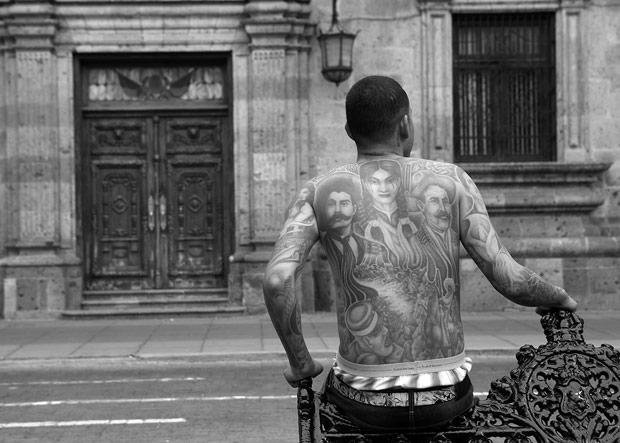
I’d also like to express my gratitude to all the superb artists and collectors in these books. The work is part of a collective mission to present tattoo as a fine art, in the most artful way. I’d also like to say, on behalf of this tattoo collective that, “Yes, we have a good idea of what we’ll look like when we’re old and wrinkly—and we’re okay with that.”
Co-authored by Kakoulas and Edgar Hoill, “Black & Grey Tattoo” sells online from Edition Reuss either as individual volumes (€98 each) or as one massive collection for €248. In the U.S. the book is available directly from the author (contact marisa [at] needlesandsins [dot] com) for $350 including shipping.
